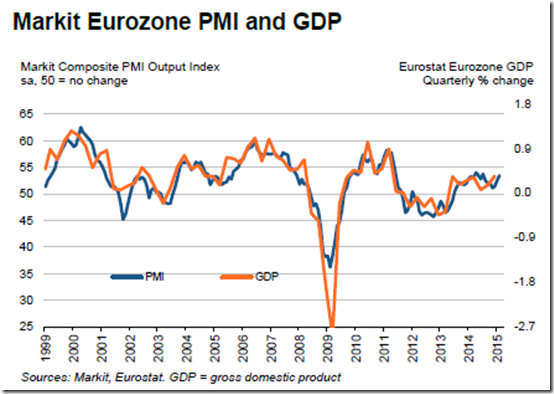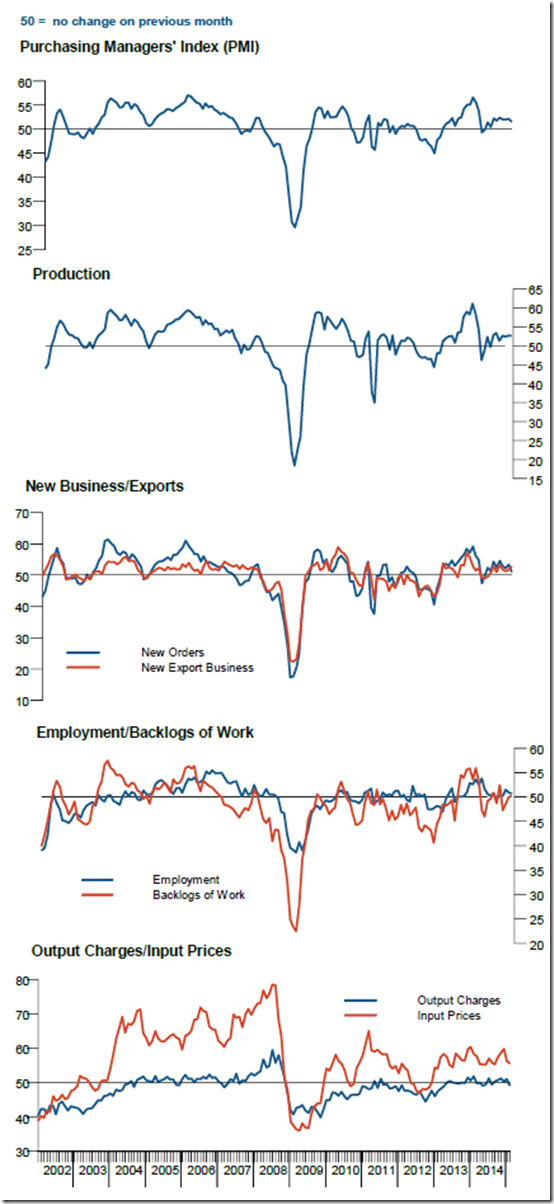NEW$ VIEW$ (20 FEB 2015) Labor Revives; Economy Slows
Post on: 24 Июнь, 2015 No Comment

U.S. Jobless Claims Fall to 283,000 in Latest Week The number of Americans filing new claims for jobless benefits fell last week, the latest sign of improvement in the labor market.
The four-week moving average for initial claims, which evens out weekly volatility, fell by 6,500 to 283,250. (Chart from Bespoke Investment )
20Initial%20Claims%20SA%204%20WK.png?__SQUARESPACE_CACHEVERSION=1424354887312 /%
Wal-Mart Lifts Pay as Market Gets Tighter Wal-Mart plans to boost pay for its U.S. employees to at least $10 an hour by next year, well above the minimum wage, signaling a tightening labor market and rising competition for lower-paid workers.
“Wal-Mart’s move to raise their employee pay base is a sign that the labor market has already tightened,” said Joel Naroff, chief economist at Naroff Economic Advisors. “Their action could create a floor under wages and others may need to follow in order to retain and attract workers.” (…)
Mike Bufano, senior vice president for planning at Panera Bread Co. told investors this month that the bakery-cafe chain is paying higher wages across the board, citing a war for talent.
Wal-Mart’s plan affects about 500,000 employees at Wal-Mart and Sam’s Club stores, or about a third of the company’s 1.4 million U.S. workers. Minimum pay will rise to $9 an hour in April, before climbing to $10 an hour by February 2016. (…)
The wage increases and other programs will cost the retailer about $1 billion. (…)
…lowering earnings per share by 4 per cent.
Even after the raises, pay for the average full-time hourly Wal-Mart worker will be $13 an hour, below the retail industry average of $14.65 an hour, according to the Labor Department.
Because of that, some economists say the effect will be muted. The majority of retailers already pay more than Wal-Mart, “so this isn’t going to move the needle much,” said Joseph LaVorgna, chief U.S. economist at Deutsche Bank. (…)
Why were they paying more than WMT? Maybe the reasons remain and other retailers will seek to maintain the wage gap. That might move the needle. Regardless, Mrs. Yellen will surely adjust her dashboard now that WMT and others begin to boost wages at the low end of the scale. More examples from the WSJ.
- Starbucks Corp. raised its starting pay last month. Gap Inc. last year said the clothing store would raise starting pay to $10 an hour. Others such as Costco Wholesale. Hobby Lobby and IKEA Group tout that all their workers earn more than the minimum wage.
- Wages are increasing at the Hilton Phoenix/Mesa in Mesa, Ariz. as the hotel has returned to 2007 levels of employment after declining about 20% in the wake of the recession. The hotel conducts surveys of rival resorts’ wages and has handed out raises to avoid losing workers.
- “This year for the first time we have over 50% of the states [with minimum wages] higher than the federal minimum wage,” Wendy’s Co. chief operating officer Bob Wright told investors this month. “We are under pressure, folks, for how we can manage our restaurant economic model.”
- The hospitality and restaurant industry, another other low-wage sector, recorded a 3.4% annual increase in wages in January.
Revenge of the nerds?
- Wall Street Staffing Falls Again The 10 largest investment banks trimmed head counts by 4% last year, the fourth year in a row of staffing cutbacks as firms face pressure to hold down costs.
The Conference Board LEI for the U.S. increased slightly in January. The gain was fueled mainly by the yield spread, consumer expectations for business conditions and the Leading Credit Index™ (inverted). In the six-month period ending January 2015, the leading economic index increased 2.3 percent (about a 4.6 percent annual rate), much slower than the growth of 4.1 percent (about an 8.4 percent annual rate) during the previous six months. However, the strengths among the leading indicators have remained widespread over the previous six months.
The index rose 0.2 percent but December was revised downward from 0.5 percent to 0.4 percent and November from 0.4 percent to 0.2 percent.
After a weaker than expected manufacturing report for the New York area earlier this week, this mornings release of the Philly Fed Manufacturing report also came in modestly weaker than expected. While economists were expecting the headline reading to rise to 9.0 from last months level of 6.3, the actual reading came in 5.2. This represents the third straight monthly decline after the index hit a 20-year high in November.
20Fed%20Main%20Chart%20021915.png?__SQUARESPACE_CACHEVERSION=1424366394800 /%20Fed%20Main%20Table%20021915.png?__SQUARESPACE_CACHEVERSION=1424366679469 /%

Interestingly, as the headline index declined, seven of the nine components actually saw month/month increases this month. The only two components that declined were Prices Paid and New Orders. Components that saw the biggest gains on the month include Inventories, Unfilled Orders, and Shipments. In the case of Inventories, the only other month where the component registered a higher reading was in August 1981!
Here is a graph comparing the regional Fed surveys and the ISM manufacturing index. The light blue line is an average of the NY Fed (Empire State) and Philly Fed surveys through February. The ISM and total Fed surveys are through January.
The average of the Empire State and Philly Fed surveys declined in February, and this suggests a slightly weaker ISM report for February.
Caterpillar (CAT) released its monthly machinery orders for the month of January and the results werent especially encouraging. As shown in the chart below, the three month moving average of year/year monthly sales fell 14%. While orders havent especially been strong lately (negative for 26 straight months now), the trend has been lower in recent months. January marked the third straight month that y/y sales accelerated to the downside, and the current level of negative 14% is the most negative reading in nearly five year (February 2010).
During the month of January y/y sales fell in every region. This was the first time that all four regions (Asia, EAME, Latin America, and North America) saw negative sales growth since December 2013.
20WW%20Sales.png?__SQUARESPACE_CACHEVERSION=1424359172262 /%
BTW, Citigroup’s Economic Surprise Index has plunged recently (BI ).
(…) In a speech on Thursday, Nathan Sheets, US Treasury Undersecretary for International Affairs, said that China had committed in bilateral talks last July to reduce intervention.
“By our reading, China has essentially refrained from foreign exchange purchases since that period,” Mr Sheets told the Peterson Institute for International Economics in Washington.
Mr Sheets’ careful wording obscures the fact that China is now apparently intervening in the opposite direction — selling foreign exchange to buffer the renminbi against an excessive drop. (…)
Oil-Price Weakness Hits Saudi Aramco Saudi Aramco is starting to feel the pain from its country’s decision to push OPEC members to keep pumping. Now it is asking contractors for steep discounts in an effort to cut costs.
The company—the world’s largest oil producer—is also considering slashing its future spending on production and exploration by as much as 25%, much like private oil companies, industry sources said. (…)
The measures are a departure for Aramco, which had boosted its spending on pumping oil and launched its first efforts at deep-sea production when crude was regularly trading at more than $100 a barrel from 2011 to 2014. (…)
To be sure, the retrenchment is small scale for Aramco and Gulf oil producers—whose production costs are much lower than for most international rivals—and executives say it won’t threaten output levels in big fields in Saudi Arabia, Kuwait or the United Arab Emirates. The cuts don’t appear to be as deep as those after the mid-1980s price crash, when Aramco and others laid off thousands of workers and cut back production to historically low levels. (…)
Aramco executives are considering slashing production and exploration spending to $30 billion a year from $40 billion while oil prices remain low, according to industry sources. (…)
In December, the Saudi oil company summoned oil-services companies including Baker Hughes Inc. Halliburton Co. and Schlumberger Ltd. to its offices in the northeastern city of Al Khobar to ask for discounts of up to 20% on certain services, for instance, well-testing procedures, according to people familiar with the matter. The companies do about $6 billion a year in business with Aramco combined, according to people familiar with the matter.
Baker Hughes offered a small discount, but Aramco has held out for 20%, according to people familiar with the matter. The two parties are still in talks to find a common ground, but no contracts have been cancelled, they said. (…)
While Aramco is beginning to feel some pain, OPEC doesn’t appear likely to change its strategy of maintaining production before its next meeting in June. The cartel has put a premium on maintaining its customer base, and Saudi Arabia has made tactical price cuts.
This week, PIRA Energy Group, a New York research firm, said Saudi Arabian production was pumping more crude than usual, as much as 10 million barrels a day —close to Aramco’s estimated capacity.
SENTIMENT WATCH
(…) Renewed demand for shares of S&P 500 companies in the bottom half of S&P’s quality rankings led to the reversal. The S&P 500 Low Quality Rankings Index gained 9.1 percent from Jan. 15 through yesterday, while its high-quality counterpart added only 3.6 percent. (…)
The low-quality index consists of 165 stocks in the S&P 500 with rankings of B or below, and the high-quality index has 130 stocks ranked A+ or A. The totals are compiled by Bloomberg.














